
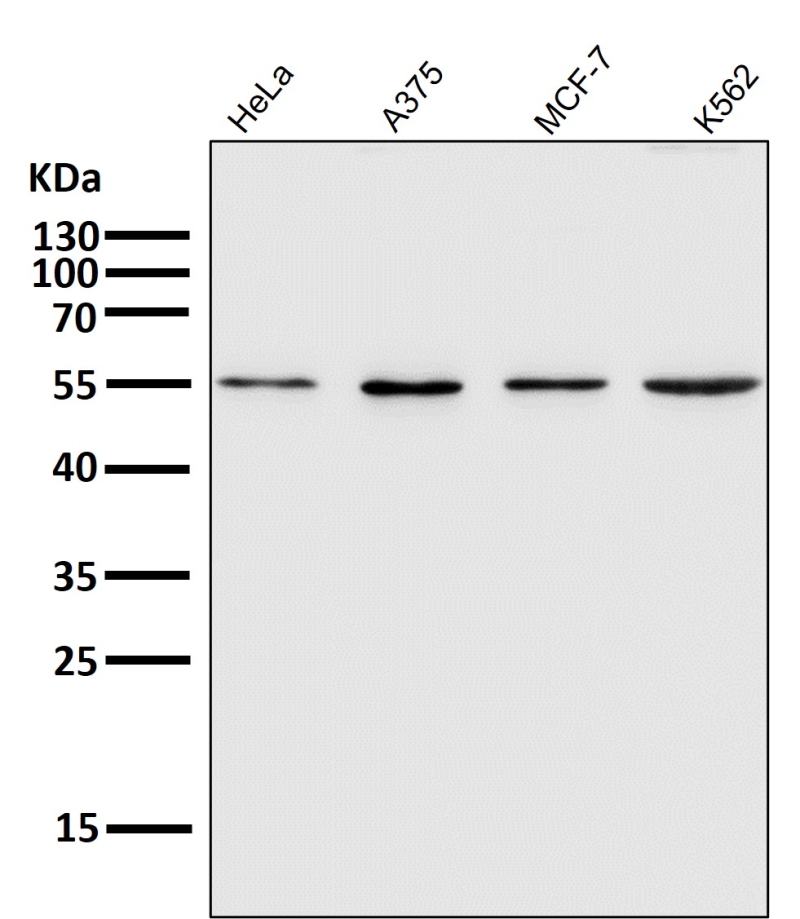
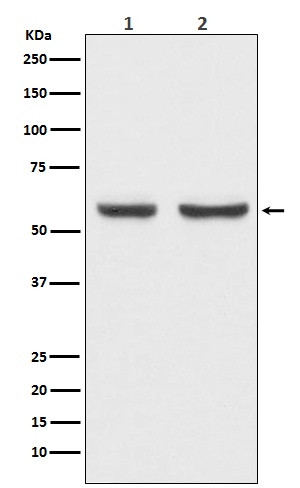
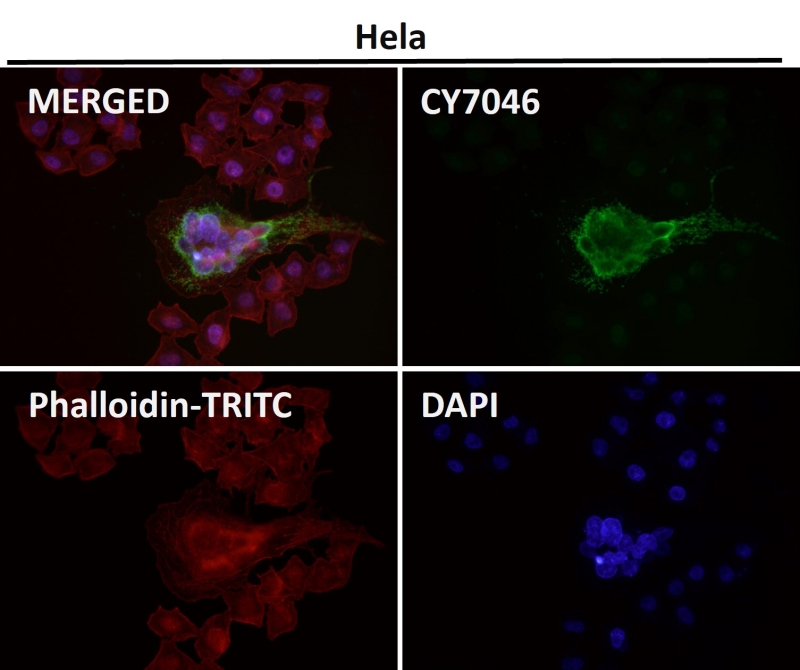
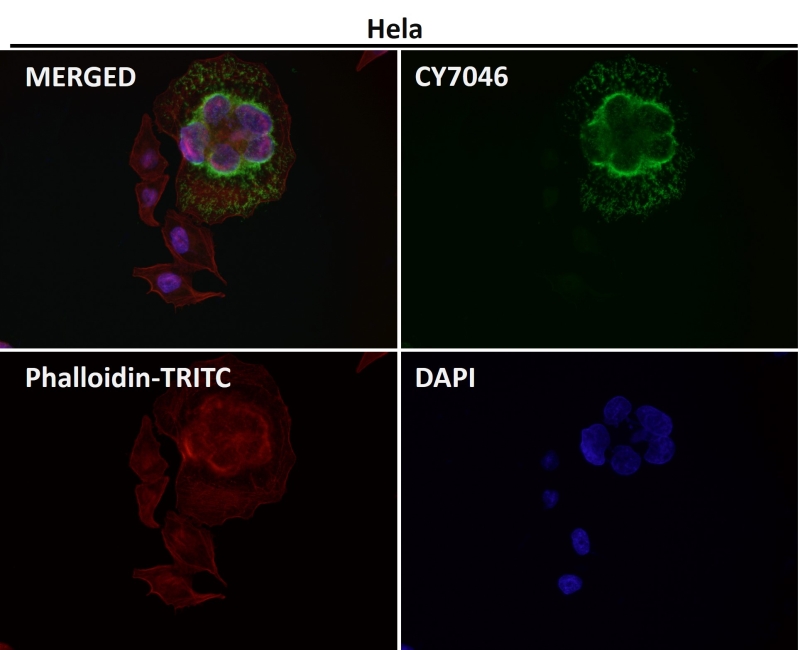
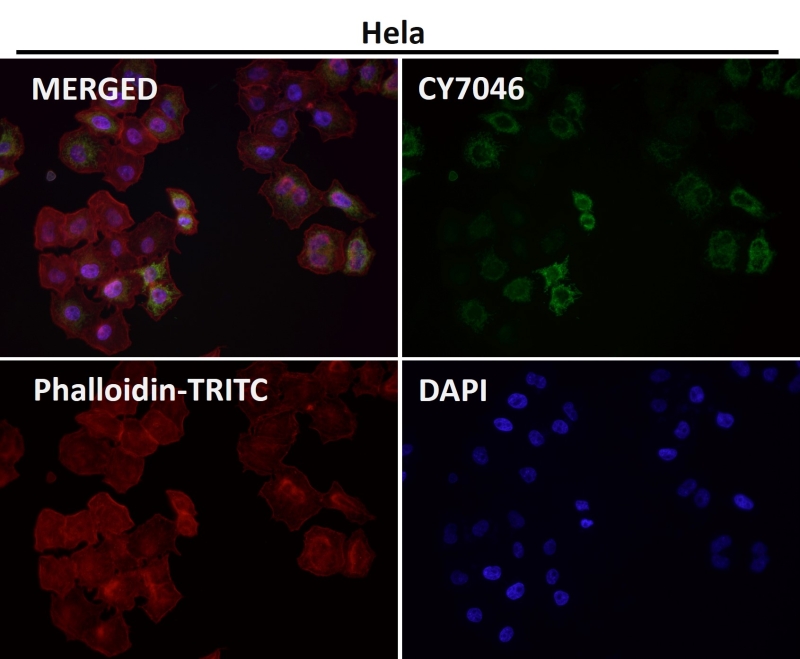
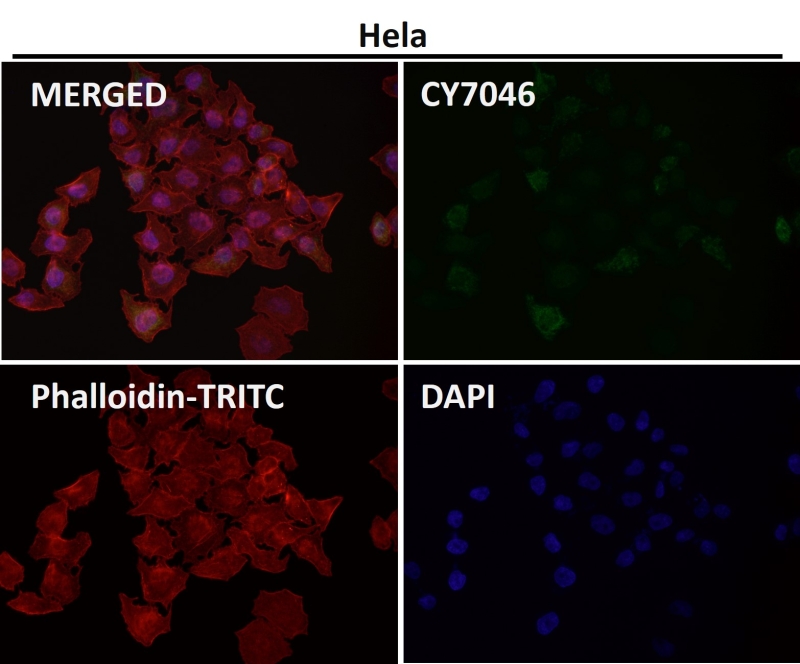
| WB | 咨询技术 | Human,Mouse,Rat |
| IF | 1/20-1/50 | Human,Mouse,Rat |
| IHC | 咨询技术 | Human,Mouse,Rat |
| ICC | 1/50-1/200 | Human,Mouse,Rat |
| FCM | 咨询技术 | Human,Mouse,Rat |
| Elisa | 咨询技术 | Human,Mouse,Rat |
| Aliases | CCBR1; Cysteine/glutamate transporter; SLC7A11; solute carrier family 7; xCT; ;xCT |
| WB Predicted band size | 55 kDa |
| Host/Isotype | Rabbit IgG |
| Antibody Type | Primary antibody |
| Storage | Store at 4°C short term. Aliquot and store at -20°C long term. Avoid freeze/thaw cycles. |
| Species Reactivity | Human,Mouse,Rat |
| Immunogen | A synthesized peptide derived from human xCT |
| Formulation | Purified antibody in PBS with 0.05% sodium azide,0.05% BSA and 50% glycerol. |
+ +
以下是3篇与xCT(SLC7A11)抗体相关的文献摘要信息,供参考:
1. **文献名称**: "System xc⁻ regulates microglial glutathione and neuroinflammation"
**作者**: Lewerenz J. et al. (2013)
**摘要**: 该研究使用特异性xCT抗体检测小胶质细胞中胱氨酸/谷氨酸逆向转运体表达,发现xCT通过调控谷胱甘肽合成影响神经炎症反应,为神经退行性疾病机制提供新视角。
2. **文献名称**: "Cystine-glutamate transporter SLC7A11 in cancer chemoresistance and ferroptosis"
**作者**: Koppula P. et al. (2020)
**摘要**: 通过Western blot和免疫组化(使用兔源xCT单克隆抗体),揭示肿瘤细胞中xCT高表达通过抑制铁死亡导致化疗耐药,提出靶向xCT可增强抗癌疗效。
3. **文献名称**: "Antibody validation and imaging of SLC7A11 in fixed cells and tissues"
**作者**: Conrad M. et al. (2015)
**摘要**: 对比多种市售xCT抗体的特异性,建立优化的免疫荧光和免疫组化流程,验证其在脑组织及癌细胞系中的定位结果,为后续研究提供方法学参考。
注:以上为模拟摘要,实际文献需通过PubMed等数据库检索关键词(xCT/SLC7A11 antibody)获取。若需具体文献DOI或实验细节,建议补充研究背景需求。
The xCT antibody targets the xCT protein, a key subunit of the system xc⁻ cystine/glutamate antiporter encoded by the *SLC7A11* gene. This transporter facilitates the exchange of intracellular glutamate with extracellular cystine, a critical step in maintaining cellular redox balance. Cystine is reduced to cysteine, a precursor for glutathione synthesis, a major antioxidant that protects cells from oxidative stress. xCT’s role in regulating redox homeostasis links it to ferroptosis, a form of iron-dependent cell death triggered by lipid peroxidation. Dysregulation of xCT has been implicated in cancer, neurodegenerative disorders, and inflammatory diseases.
In cancer, xCT is often overexpressed, enabling tumor cells to resist oxidative stress and chemotherapy. It also modulates the tumor microenvironment by exporting glutamate, which may promote tumor progression via paracrine signaling. In neurodegenerative conditions like Alzheimer’s disease, disrupted system xc⁻ activity may exacerbate excitotoxicity due to excessive glutamate release. xCT antibodies are widely used in research to detect protein expression levels via techniques like Western blotting, immunohistochemistry, or flow cytometry, aiding studies on disease mechanisms or therapeutic targeting. Recent interest in xCT inhibitors as ferroptosis inducers highlights its potential as a biomarker or therapeutic target in precision medicine. However, antibody specificity and validation remain critical to avoid off-target artifacts in experimental models.
×